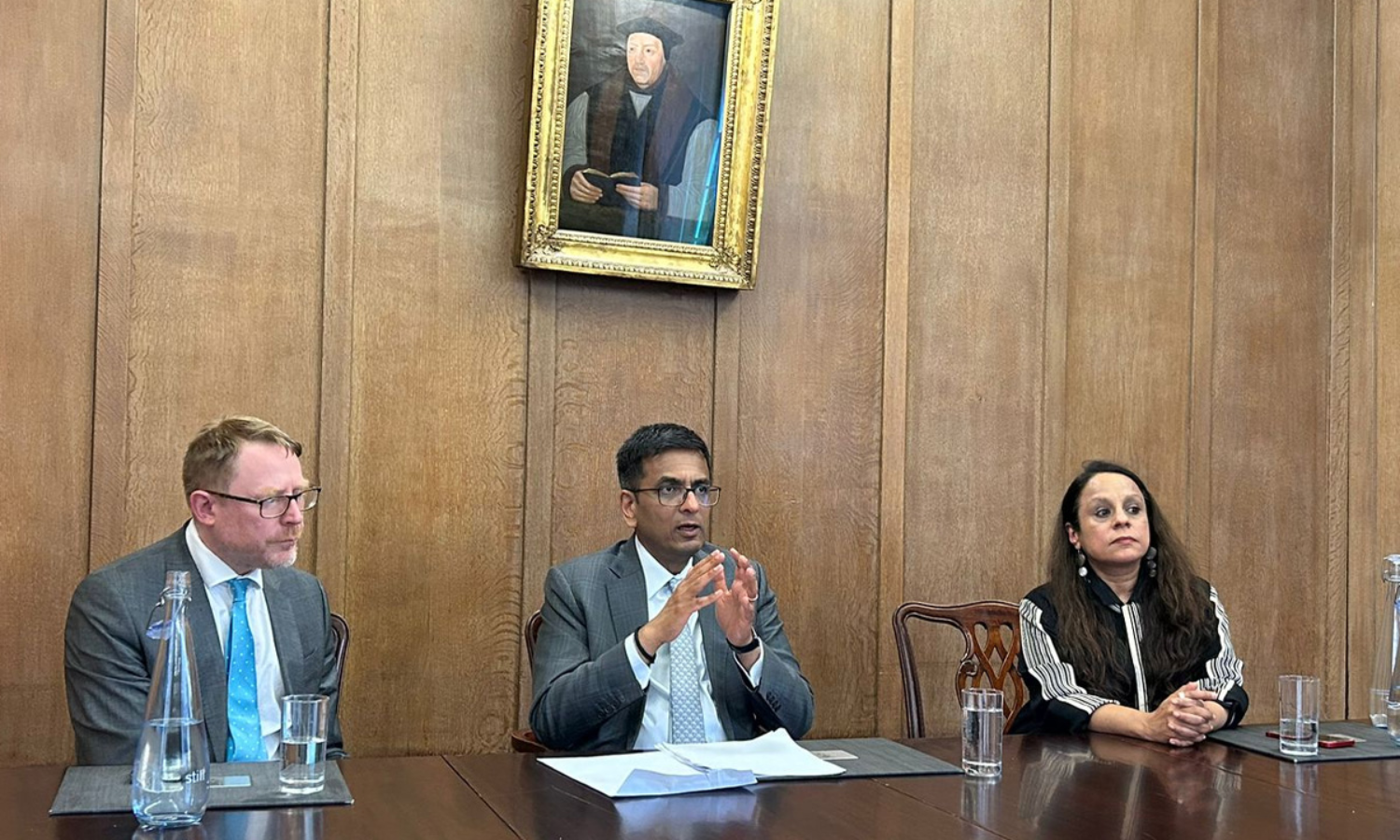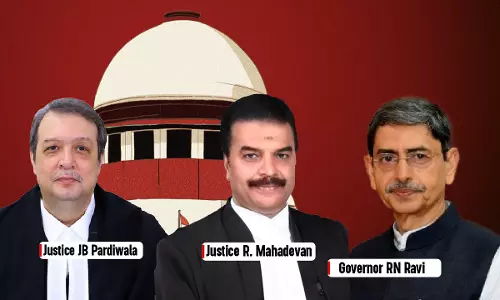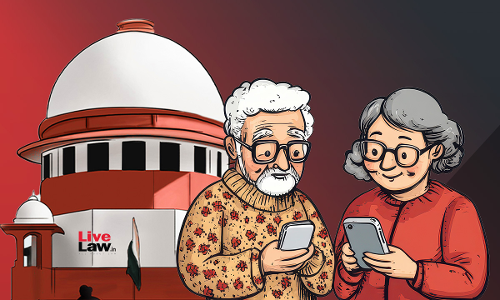Constitutional Courts Provide Democratic Space For Reasoned Dialogues Especially In Times Of 'Fractured Polities' : CJI DY Chandrachud

Chief Justice of India Dr. DY Chandrachud in his recent lecture at Cambridge University, United Kingdom spoke extensively on his idea of 'transformative constitutionalism' and the role of Indian Courts in bolstering a democratic space for discussing diverse views. He expressed how Courts in Constitutional Democracies like India had a key role in ensuring that the marginalized get a...
Chief Justice of India Dr. DY Chandrachud in his recent lecture at Cambridge University, United Kingdom spoke extensively on his idea of 'transformative constitutionalism' and the role of Indian Courts in bolstering a democratic space for discussing diverse views.
He expressed how Courts in Constitutional Democracies like India had a key role in ensuring that the marginalized get a voice, especially in a time where one can witness "fractured polities across the globe".
"In a constitutional democracy we are also providing a democratic space for a reasoned dialogue, which I believe is extremely important particularly in a time where you have fractured polities across the globe. In fractured polities, it is very crucial that people must have a voice, the marginalized particularly must have a voice, and a place where irrespective of the outcome there is a perception that these voices will be tested on the basis on reason."
The CJI also explained how with the help of writ of continuing mandamus, the Constitutional Courts ensure that the guidelines laid down are implemented properly. This, he analyzed , was in contrast to the western practice of implementing Court orders only through contempt proceedings. Recalling the judgement PUCL v. Union of India where the Top Court declared the right to food as a Fundamental Right under Article 21, the CJI explained how the writ of continuing mandamus was used to execute the directions on government food policy and public distribution systems.
" We go beyond the statement of doctrine to ensure that our orders are enforced not by using the contempt jurisdiction which I believe is not the best jurisdiction to exercise in a democratic polity but the jurisdiction of issuing a writ of continuing mandamus, so that we require governments to come back to us and report the extent to which our judgements are being enforced. Very often you find that something which we designed in the judgement is very difficult to enforce because we are not conversant with the ground reality. Therefore we have ourselves the ability to modulate the views which we formulate and the directions which we give."
The Interpretative Approach Of The Courts Cannot Be Pigeonholed Into Judicial Overreach Or Activism
The CJI addressed how the decision in PUCL invited criticism by few scholars on terming the continuing orders of the Supreme Court as 'judicial overreach' and how often such decisions open the debate on where to draw the line between judicial activism and overreach.
The Chief Justice expressed that the key role of the Constitutional Courts is to interpret the law to its best and such an approach cannot be compartmentalized or 'pigeonholed' into judicial activism or restraint. According to him, such extreme binaries do not exist when seen from the point of view of a judge.
" Very often when we talk about the transformative potential of the judicial function, there is a tendency for the debate to be clothed with the arguments of judicial restraint and activism. In today's address I will not be trenching on the realm of judicial restraint and judicial activism, because I don't believe in these binaries, because if you sit as a judge, you realize that there are no strict or dividing lines and these binaries as they exist in the law, they do not exist in the life. So the pigeon-holing of the models of the adjudication into restraint and activism based on the outcome the case, the remedies employed, in my opinion it is the 'interpretative approach which the court follows."
On Transformative Constitutionalism
Touching upon the main idea of Transformative Constitutionalism, the CJI opined that in the Indian context, the Constitution is seen a living and expanding document, which adapts and transforms according to changing social expectations. In order to impart transformative constitutionalism, he explained that one has to deviate from the approach of Originalism where the interpretation of the law is strictly from the point of view of the intention of the constitution makers.
"Originalism as a model of adjudication is inadequate because Constitutional provisions do not deal with all provisions with specificity, and I say that in context of the Indian Constitution because it's a huge blueprint of governance..."
To explain the growing trend of transformative constitutionalism, the CJI gave the example of how after the court's decision to strike down S. 377 of the IPC in the landmark case of Navtej Singh Johar v. Union Of India, another petition was filed demanding matrimonial rights for the LGBTQ+ community which ultimately led to another round of deliberation in Supriyo v. Union of India.
He stressed stated while the majority opinion in Supriyo refused to recognize same-sex marriages, the legal deliberations paved way for a larger public discourse in the society about the changing perception towards and demands of the LGBTQ community. This according to him was quintessential in a transformative constitutional paradigm.
"This dialogue which takes place in the court paves the way for a future and a more evolving society. Already people - when I visit law schools, when I talk to civil society activists and when I talk to both ends of the spectrum, the liberal and not-so-liberal - everyone is conscious of the fact that there is a change which is taking place in India on the aspect of LGBTQ relationships. Part of the reason for this change is the prominence which the debate on the subject assumed as a result of the dialogue in the court itself."
Criticism On Lack of A Consistent Form & CJI's Solution
The CJI addressed the issue of lack of a consistent form in applying the model of transformative interpretation. Since this model relies on a judge's personal understanding of constitutional values, different judges might interpret these values in various ways. This can lead to different views on what values like equality mean in practice. The CJI proposed that a solution to this issue is to agree on a common approach to identify constitutional values. This can only be done by giving a holistic read to the constitution and understand the socio-political context in which it was born.
"The most common critique of the transformative interpretation model is that there is no common form of a transformative interpretation. Since transformative interpretation is based on a judge's understanding of the constitutional values, it is argued that how the judge understands the constitutional value may vary thereby creating an uncertainty, for example every judge may read that equality is a significant constitutional value, they may disagree on the facts and conceptions of equality. This critique is answered if we arrive at a consensus on the approach to identifying constitutional values. Therefore in my opinion the values espoused by the Constitution must be identified not upon the reading of a single provision, but upon reading the constitution as a whole and upon the understanding of the social and political context in which the document was adopted."
In his concluding segment the CJI opined how there has been a holistic evolution of the constitution as well as the Indian polity, irrespective of the continuous amendments to various parts of it throughout the years.
" There has been an evolution not just of the constitution but of the Indian polity to a more stable polity, where the fears of 1950 of would the constitution survive, I believe do not exist anymore- the constitution has survived in the sense, that it continues to subsist, it continues to exist, despite the fact that it has been amended to take into account the new exigencies, new challenges like local self-governance."
Taking the example of the GST laws recently enforced, where both the Union and the States now have concurrent powers to tax goods and services, the CJI analyzed how the notion of federalism had evolved and redefined with the changing polity of the nation.
"The constitution has grown into a different model of federalism- which I have called in my recent judgements as the asymmetric model of federalism...so this is another example of how the evolution of politics, the evolution of how actually the constitution has played out practiced, has shaped judicial doctrine. This is not a case where the judicial doctrine has led from the front by changing constitutional interpretation- where judicial interpretation has taken cognizance of the fact that the constitution today in its actual working is very different from what the framers intended the constitution should be in 1949-50."


![LAST DAY To Get 30% Discount On LiveLaw Academys Judicial Service Examination Preparation Course [Apply Now!] LAST DAY To Get 30% Discount On LiveLaw Academys Judicial Service Examination Preparation Course [Apply Now!]](https://www.livelaw.in/h-upload/2025/04/10/500x300_595212-lla-last-day-750-x-450.webp)

